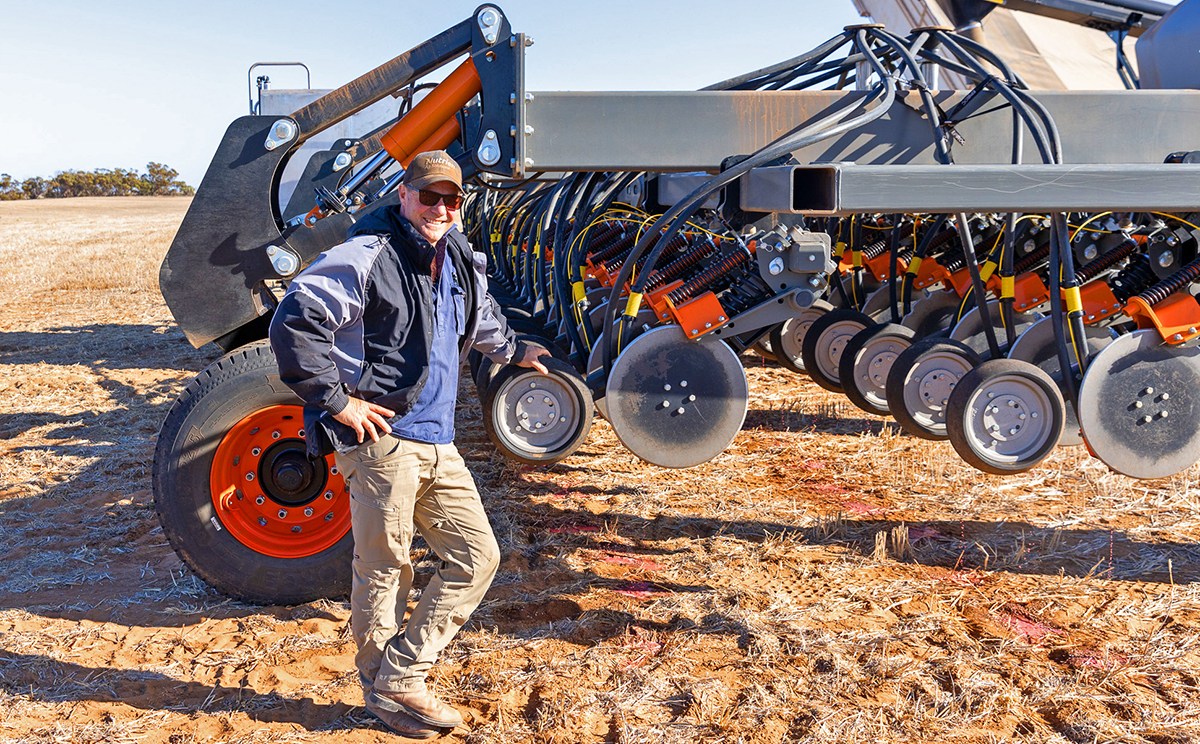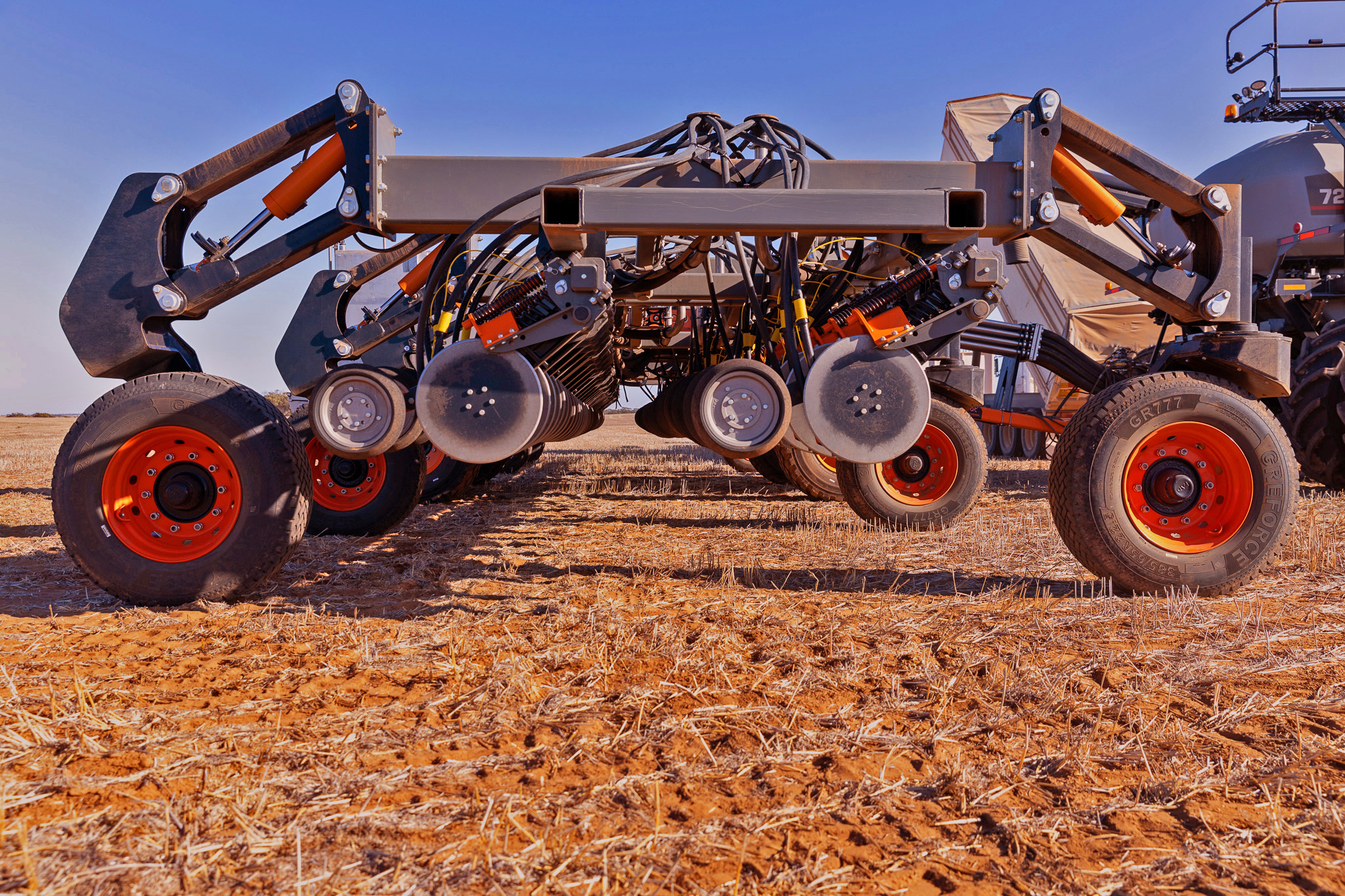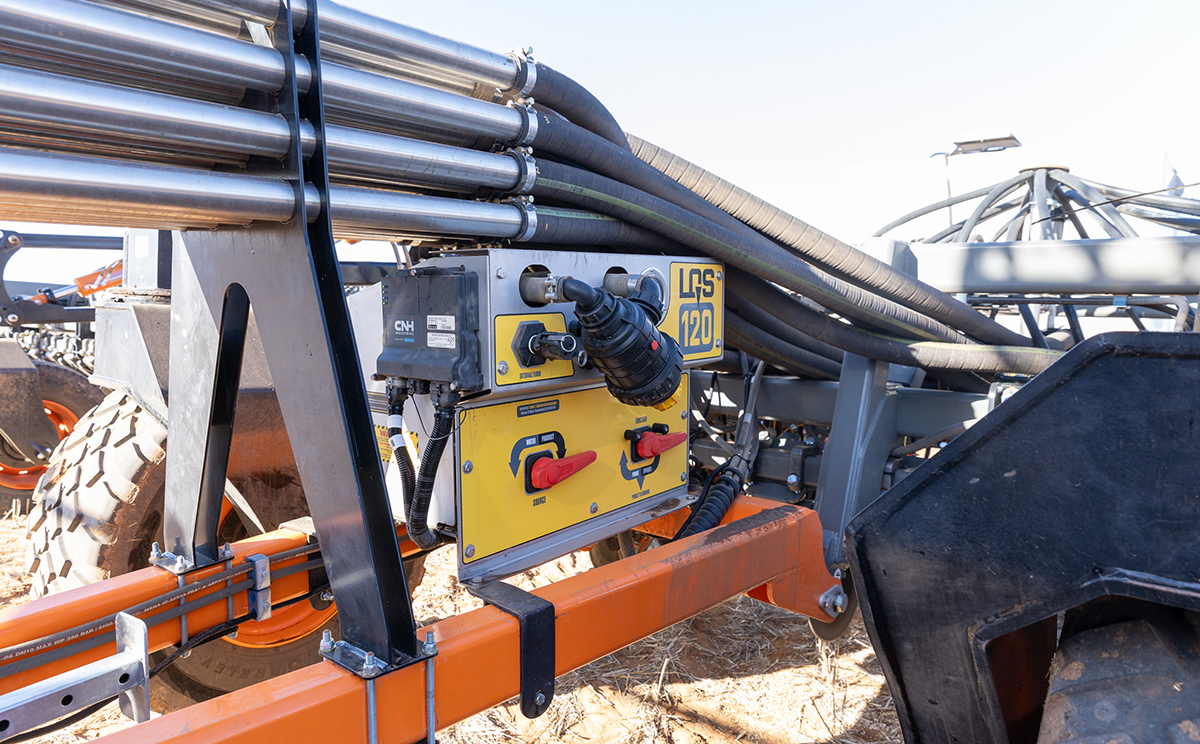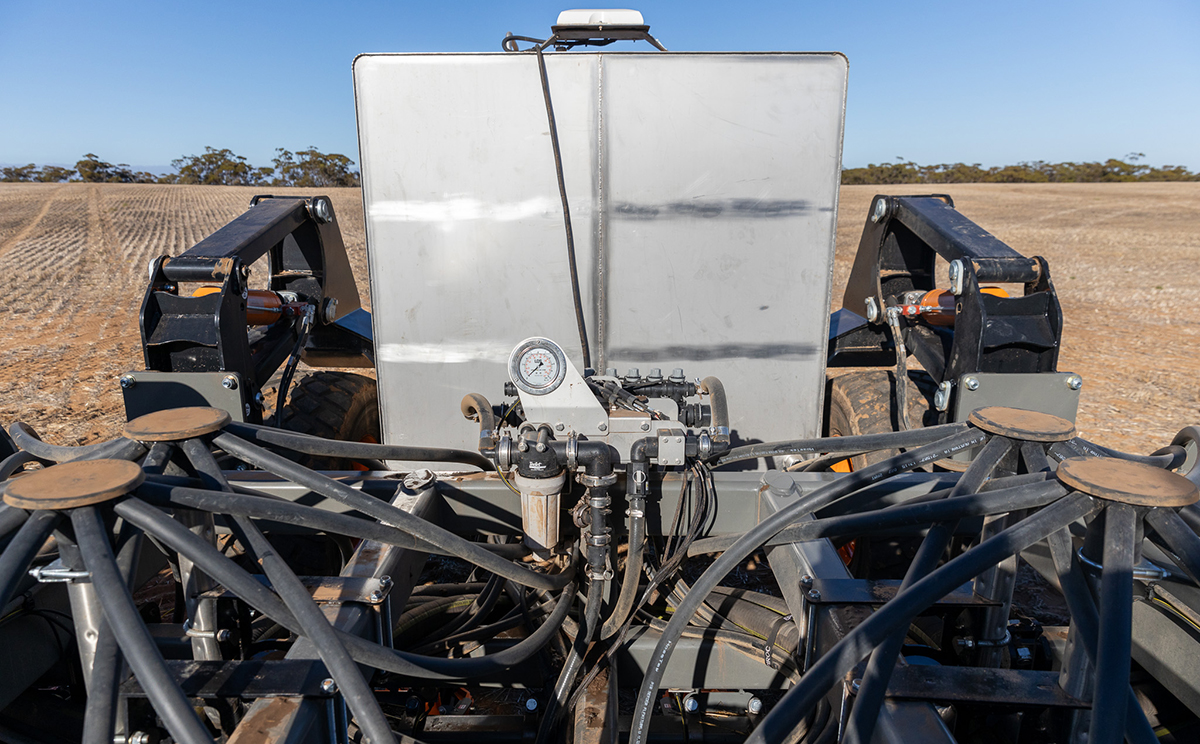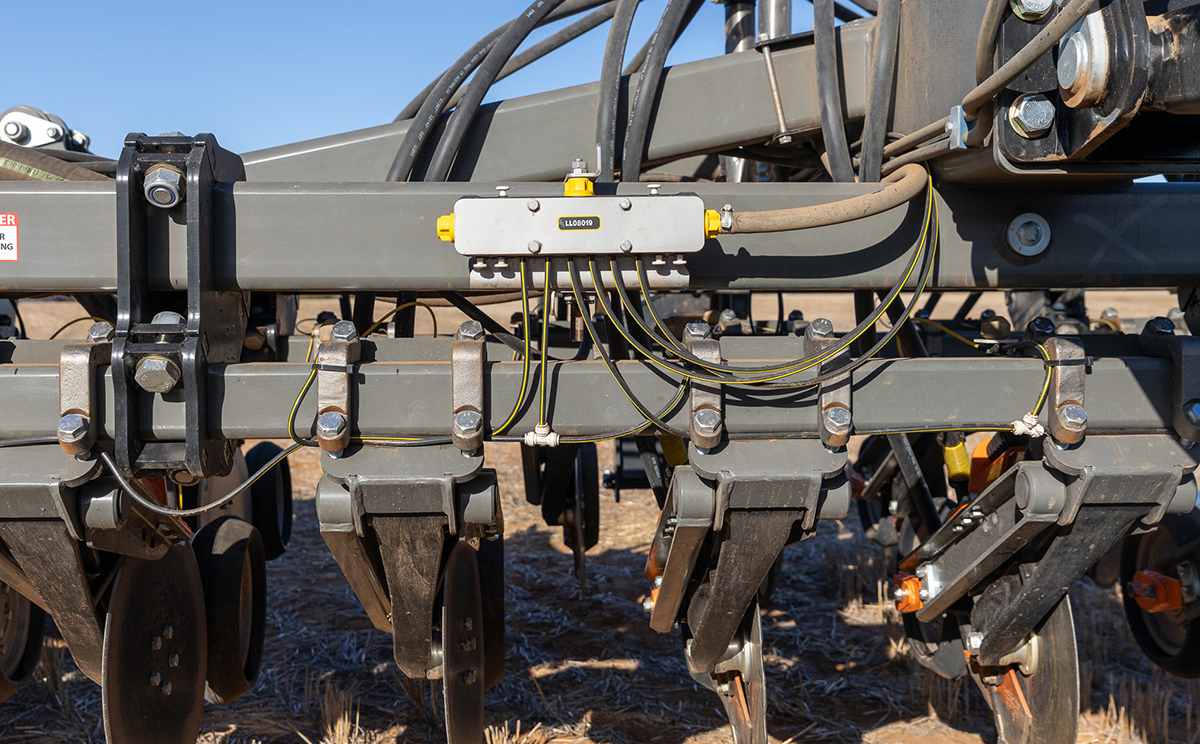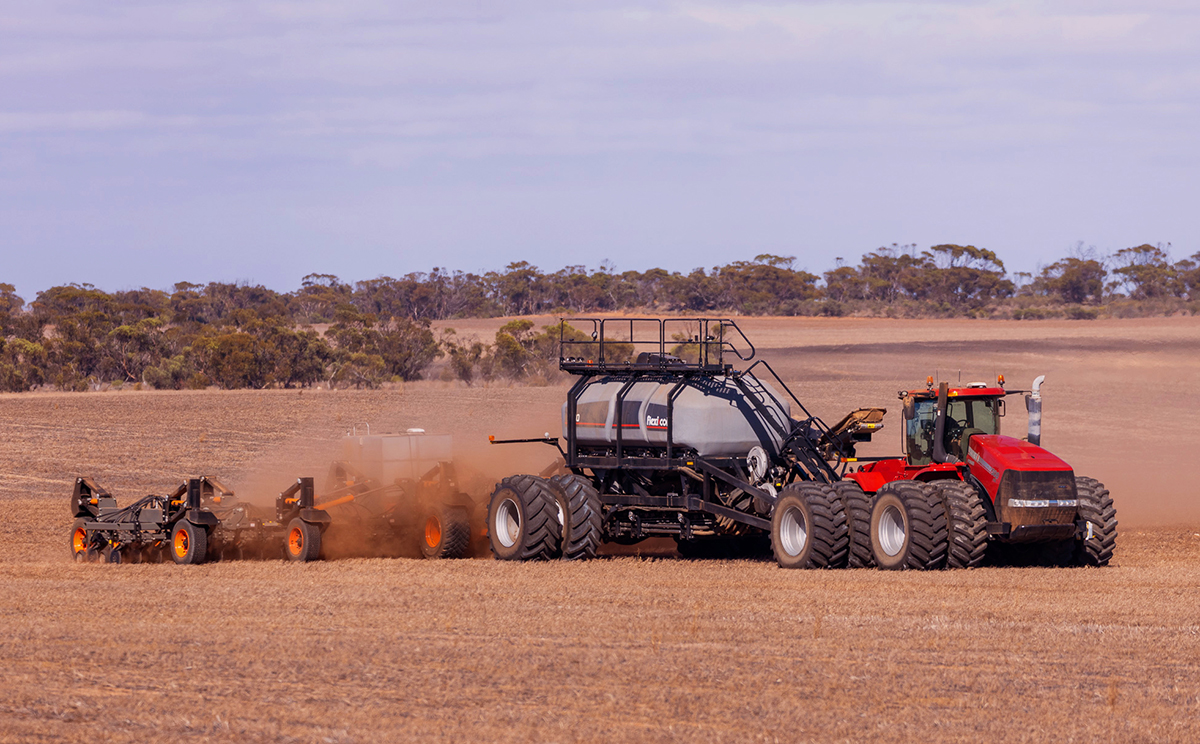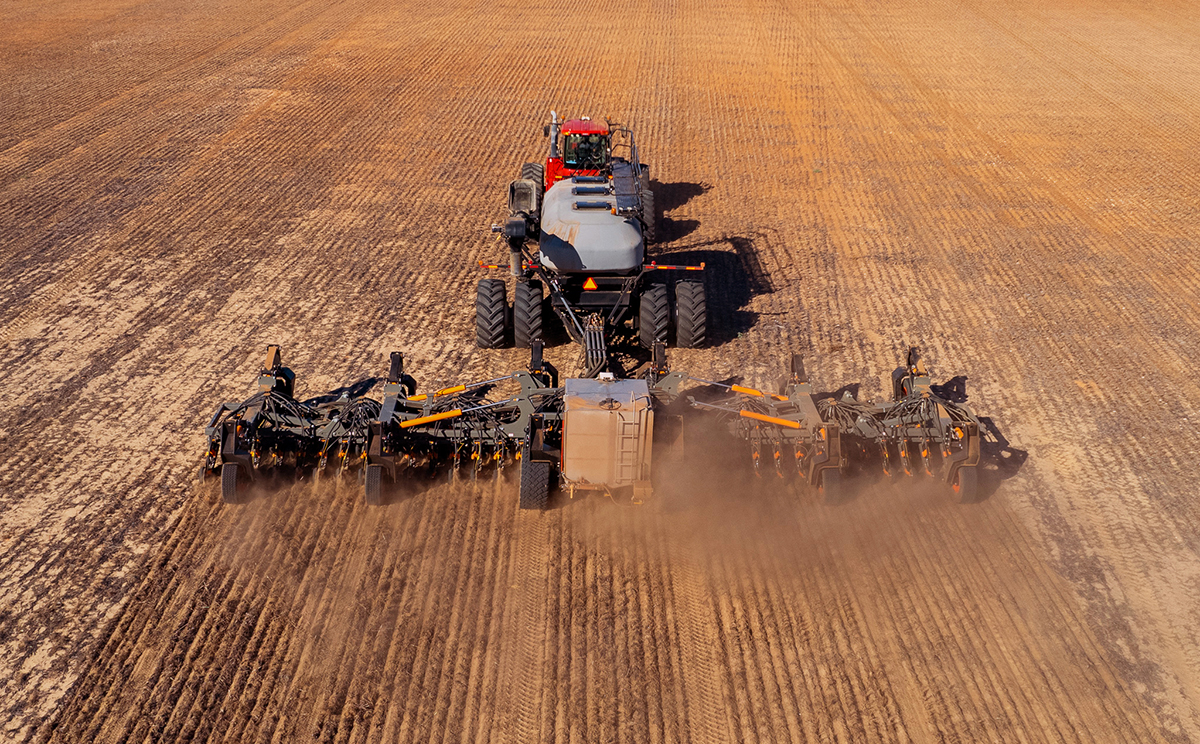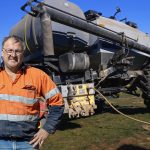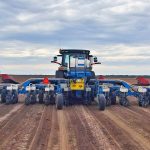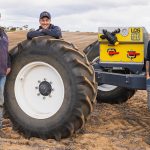Staying the distance for timely and efficient trace element applications
The durability and reliability of his Liquid Systems (SA) unit has not only helped resolve micronutrient deficiencies for Eyre Peninsular cropper Dustin Sparrow, but has cemented its place as a key component of his cropping enterprise.
| ABOUT |
|---|
- WHO:Dustin and Jodi Sparrow
- WHERE:Wudinna, Eyre Peninsula, South Australia
- CROP:3600ha continuous cropping enterprise- wheat, barley, lentils, peas, canola
- INPUTS: Trace Elements (zinc, copper, sulphur), Fungicide
- EQUIPMENT: LQS120 control module with liquid section control. Flexi-Coil Air Cart and a new 60ft Rootboot Razor Disc Bar, with 5000Lt stainless steel tank. Raven RCM Isobus Controller.
| KEY OUTCOMES |
|---|
- Reduced zinc deficiency
- Reduced herbicide costs
- Efficiencies from reduced passes
- Seamless set-up and trouble-free application with Liquid Systems (SA) equipment
When South Australian continuous cropper Dustin Sparrow looked to upgrade his seeding bar and air cart there was no doubt that he would stick with Liquid Systems (SA) equipment for applying trace elements, after successfully using the liquid injection technology for around seven years without a hitch.
Dustin, who farms 3600 hectares with his wife Jodi at Wudinna, on South Australia’s Eyre Peninsula, purchased his first system in 2016 to apply trace elements including zinc, manganese, and copper, plus fungicides such as Flutriafol.
He says the equipment’s performance and ease of use stand out. “We’ve never touched it – the systems done exactly what it was supposed to the whole time we’ve owned it. It’s well designed and built. It’s very robust and we’ve never had any hassles with anything breaking or falling off.”
This reliability and durability gave the Sparrow’s the confidence to purchase a new LQS 120 module with sectional control to run with a completely new seeding rig for the 2024 cropping season. A new Flexi-Coil Air Cart and a 60 ft disc seeder replaced the old air cart and bar, which had seen a lot of work and modifications over the years.
Dustin says it’s a big up-front investment but he is confident it will save money in the long run by enabling them to cover more ground and achieve improved trash handling and greater efficiencies in their cropping operation.
Prior to adopting Liquid Systems, Dustin applied trace elements using a boomspray but struggled to apply them in the ideal window, resulting in zinc deficiencies in wheat, barley and pea crops.
“We were applying trace elements around mid to late tillering, but ideally zinc should be applied at the two to three-leaf stage – we were probably three to four weeks late and so deficiencies were still showing up in some crops,” said Dustin.
Now with the micronutrients applied up-front in the furrow, and readily available for when the crop needs it, deficiency symptoms are a thing of the past.
We get it all out up-front and it’s there ready to go when the crop needs it. Plus, we’re applying it right with the seed where it needs to be.
Applying between 40 to 60L/ha of liquid product, the Sparrow’s have found the rate control works well applying a constant stream. Rates of micronutrients are around 2kg/ha of zinc sulphate, 3kg/ha of manganese mono and about 200g/ha of a copper oxide formulation. They also apply seed inoculants and fungicides to the tank at seeding where needed.
Compatibility problems and tube blockages have been minimal as Dustin says they keep it simple and don’t combine anything they don’t already know is going to mix. He recommends a good cleaning regime is the key to avoiding blockages.
The Sparrow’s use a 13,000L cartage tank and three storage tanks for each trace element and while Dustin can mix the zinc and manganese easily prior to seeding, he suggests that those starting out consider purchasing pre-mixed fertilisers to save time and avoid the expense of additional storage tanks.
“One of the biggest challenges of going to the liquid is having the equipment to get the product to the field, which is a truck and a tanker. We’re set up now but I know some growers who get shuttles from a supplier that mixes it up and as long as you order it early you are ready to go.”
Reduced herbicide costs are another benefit Dustin has found since adopting liquid injection technology. Previously micronutrients were added to herbicides to reduce in-crop passes but this meant using more expensive ester herbicide formulations that mixed well with zinc. Now with separate applications, there is more flexibility to choose cheaper herbicide formulations and without the worry of combability issues.
With the 2024 crop all but in the ground, Dustin is pleased with the performance of the new seeder and the Liquid Systems (SA) module.
I’m very happy with the seeder and the Liquid Systems equipment can’t be faulted, it just works as it should.
At this stage, Dustin says the jury is out on the financial benefits of the sectional control for applying trace elements. “It was a bigger outlay than we initially wanted to spend and while it means we can be more prescriptive with our trace element applications, it would be a better investment if we were applying variable rates of liquid P,” he said.
Dustin has been very impressed by the service provided by the Liquid Systems team. He received his newest module just two days after placing the order, which is a stark contrast to the year-and-a-half wait for the new seeder.
“I made a call and two days later we had the liquid systems in the shed ready to go- there’s no messing around. The Liquid Systems (SA) team knows what works. You just tell them what you are trying to run and they work it out – there is nothing they can’t make.”
Get a Quote
"*" indicates required fields

